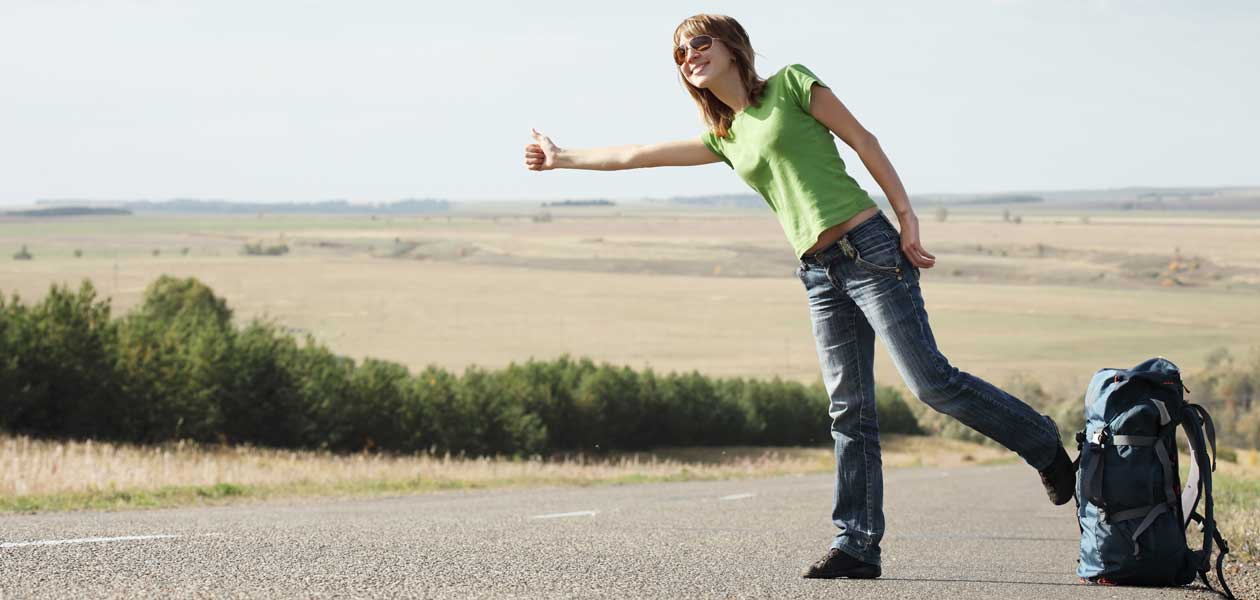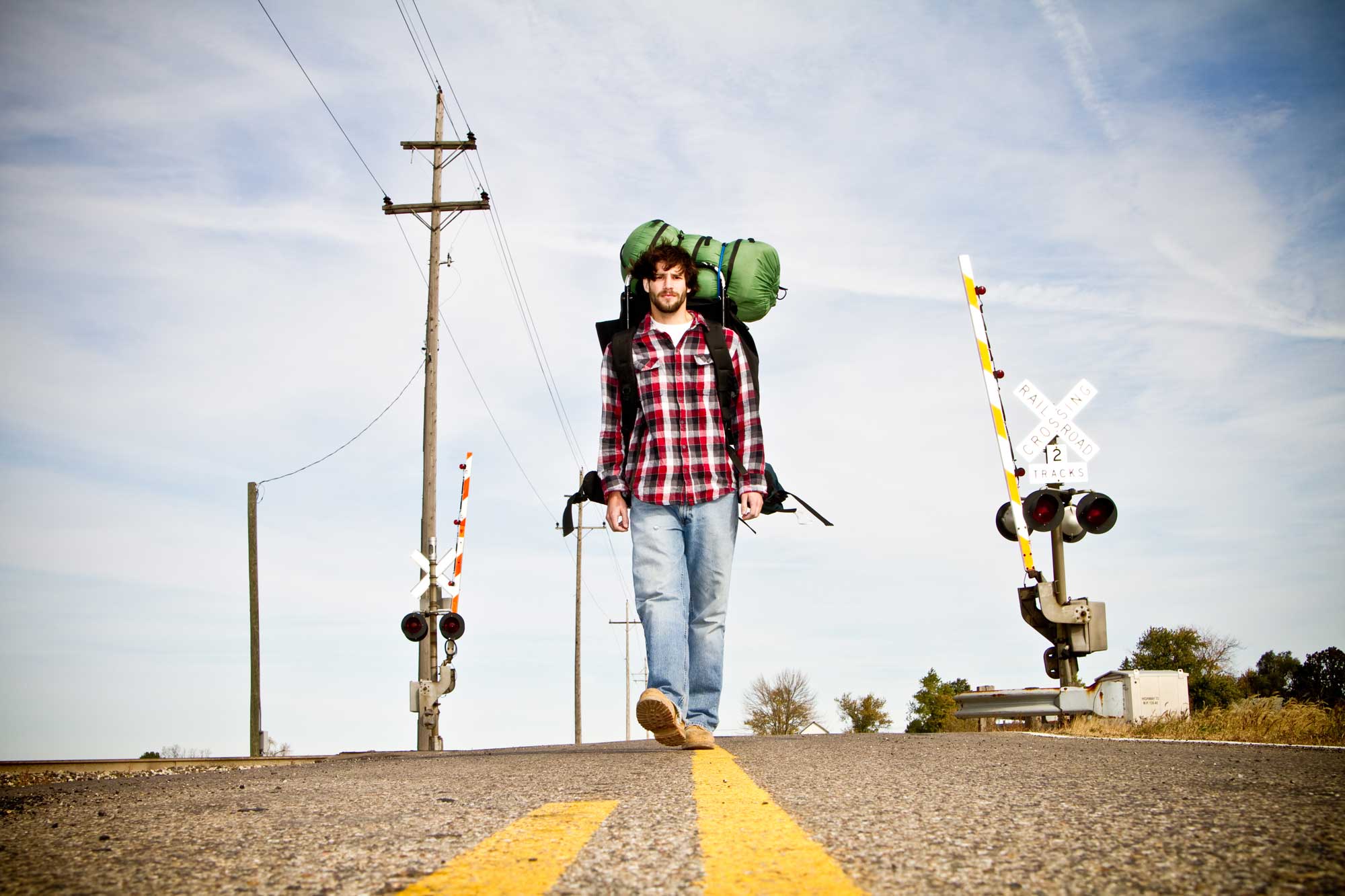
By far the cheapest, but also the most dangerous way of travelling from one destination to another.
Hitchhiking became a popular method of travelling ˝from point A to point B˝ during the 1930s – this was the time of the Great Depression when many found themselves without work or money, while few were, naturally, lucky enough to own a car. Exciting and, in most cases, also completely free of charge, hitchhiking was often the favourite means of transport for hippy youth during the 60s and 70s, however, its popularity has drastically fallen during the last few decades – largely to be thanked for this are the highly publicised cases of violence towards hitchhikers, which created a climate of fear and mistrust. However, hitchhiking buffs still exist and stress its many advantages – in addition to being very kind towards your travelling budget, by meeting new people you also have the unique chance of getting better acquainted with the culture you have found yourself in.
If you’re feeling adventurous and decide to opt for hitchhiking as a method of getting to your next location, here are several tips from seasoned hitchhikers. First, never neglect your appearance, as you will appear as a much more desirable passenger if you have a clean and tidy exterior – some also suggest that it helps to wear white clothes (which add to an image of cleanliness and ˝politeness˝), or to clad yourself in bright, noticeable colours. As for company for hitchhiking, although you might feel the safest in a group, keep in mind that the bigger your company, the smaller the chance that somebody will stop for you, thus the best compromise is to travel in pairs. Women that hitchhike by themselves are, naturally, in the most vulnerable position, but will also manage to get a ride the soonest – whether from men or from women and families that will stop for a female traveller to ˝save˝ her from other possible dangers on the road. If you are a woman and find yourself in the situation of having to/wanting to hitchhike by yourself, make sure take extra caution, while it is also a wise decision to arm yourself with a bottle of pepper spray or some other means of self-defence.

Hitchhikers like to say that there are three key factors that determine whether somebody will stop for you or not – location, location and location! What is most important is that your hitchhiking spot is visible, that the traffic on the road next to it is not too fast, and that cars can stop next to it safely. One should also bear in mind that a bigger number of cars does not increase your chances of a free ride – in a motorised twist on the Bystander Effect, there is a large possibility that your potential driver will simply think that, out of all the other drivers on the road, there is bound to be somebody else who will pick you up. It is best to stand on a spot outside the city centre on a road that leads in the direction you are intending to go in (motorway exits and entrances are a particularly good location), while hitchhiking at a petrol station can also be a good choice as you can also ask around if anybody wants to give you a free lift. A cardboard sign with a clearly written location or direction can also be a huge help, but a funny sign (e.g. ˝I don’t stink˝) can also be efficient in making a driver laugh and stopping for you. A cheerful attitude is of key importance – no matter how exhausted you are from waiting for a lift (and you are bound to be at some moment), never forget to flash a huge smile at all the passing drivers, even to those that just rush past you.
While the tips listed above are applicable to almost all locations in the world, there are some places in which you should somewhat adapt your behaviour, while some should be avoided completely. Thus the famous ˝thubs up˝ hitchhiking gesture is very offensive in some countries in the Middle East and West Africa and equivalent to a middle finger in the West, while in some other places the drivers could understand your gesture as merely a signal that ˝everything is OK˝ and simply pass you by. In such cases it is better to call for a ride by waving your hand or, in some countries in South America, by pointing your index finger in the direction in which you wish to go. Before getting in a stranger’s car in a foreign country, take a good look at the driver and trust your instincts in selecting a ride (if something in the whole situation seems off, do not hesitate to refuse) and, since drivers like charging for their services in some countries, settle (non-)payment at the very beginning. Naturally, make sure to avoide unstable countries and countries with a high rate of violence (e.g. Columbia, which is held to be one of the least desirable destinations for hitchhiking), however, also inquire in advance about how easy it is to get a free ride in a certain country, as in some places hitchhiking culture is nearly non-existent, or is quite rare because of a scarcity of personal vehicles. There is also a place on the Internet where hitchhikers gather to share their experiences of hitchhiking in different countries, so make sure to check out the situation before sticking your thumb into the air.
Silvia Vidović




